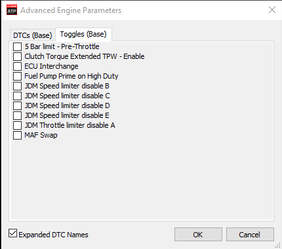Nissan GT-R MAF Tuning Addendum
Nissan GT-R MAF Tuning Guide v6.0
The following guide is designed to present experienced tuners with an efficient calibration procedure specific to this Accesstuner application.
If you are new to engine management system tuning, we suggest gaining general knowledge and understanding of both calibration and engine dynamics before proceeding at your own risk.
Nissan GT-R Guides
- Nissan GT-R Tuning Guide
- Fuel Injector Data: Nissan GT-R
- GT-R Data Monitor Support
- Nissan GT-R - COBB Custom Features
- Cobb Custom Features: GT-R Auto Shift Point Tuning Guide
- Cobb Custom Features: GT-R Automatic Shifting in Manual Mode
- Cobb Custom Features: GT-R COBB Advanced Boost Control
- Cobb Custom Features: GT-R Cranking Tables And Monitors
- Cobb Custom Features: GT-R DBA Timing on CBA Cars
- Cobb Custom Features: GT-R Engine Safety Features
- Cobb Custom Features: GT-R Enhanced Injector Control
- Cobb Custom Features: GT-R Flex Fuel Tuning Guide
- Cobb Custom Features: GT-R Fuel Pump Test (Manual Activation)
- Cobb Custom Features: GT-R Rolling Boost
- Cobb Custom Features: GT-R Secondary/Staged Injection and Multi-Fuel Tuning Guide and Information
- Cobb Custom Features: GT-R Traction Control
- COBB Custom Features: Advanced Launch Control Tuning Guide (with BOTL)
- Nissan GT-R Accesstuner TSBs
- Nissan CAN Gatway Flex Fuel & Fuel Pressure Setup
- COBB Custom CAN Gateway DTC List
Nissan GT-R COBB Custom Features
- GT-R Automatic Shifting in Manual Mode
- GT-R Auto Shift Point Tuning Guide
- GT-R COBB Boost Cut
- GT-R Cranking Tables And Monitors
- GT-R DBA Timing on CBA Cars
- GT-R Engine Safety Features
- GT-R Enhanced Injector Control
- GT-R Flex Fuel Tuning Guide
- GT-R Fuel Pump Test (Manual Activation)
- GT-R Rolling Boost
- GT-R Secondary/Staged Injection and Multi-Fuel Tuning Guide and Information
- GT-R Traction Control
- COBB Custom Features: Advanced Launch Control Tuning Guide (with BOTL)
MAF Bank Switch for intercoolers with non-standard Airflow
The Stock GT-R intercooler has the turbo from one side, feeding the throttle body going to the opposite bank. Some aftermarket intercoolers change the airflow through the motor in such as way as to have the turbo providing the airflow for the same side. In order to correct this the tuner can either re-wire the MAF sensors to read from the appropriate side of the motor OR the tuner can simply enable the MAF bank switch toggle to change MAF banks inside the ECU.
MAF-Based Tuning
Step 1: Mechanical Configuration of the Vehicle
The first step in MAF based tuning for a GT-R is to choose a COBB Tuning base map that best matches the components of the vehicle to be tuned.
The Stage1 calibrations are designed for vehicles with a stock or axle-back exhaust system. The Stage1 COBB mapping was designed with optimized ignition, boost, and fuel targets for enhanced performance and responsiveness on a vehicle with mainly stock hardware.
The Stage2 mapping is designed for vehicles equipped with exhaust system modifications including replacement of at least the restrictive “y-pipe”. Additional performance can be obtained by fitting a cat back exhaust which replaces the restrictive factory mufflers.
Step 2: What Fuel is the Vehicle Using
COBB Tuning offers calibrations for different fuels including 91, and 93 octane (95 and 98 RON). The Nissan GT-R is available throughout the world and we've developed calibrations for the most readily available fuel types throughout the world markets. If you fuel does not meet the standard of the available COBB maps you will need to adjust the calibration accordingly. The higher the octane/RON the higher the fuel quality. Higher-octane fuels burns more slowly and can support higher cylinder pressure. Take a moment to compare and contrast timing, boost, and ignition tables from each type of calibration. Higher octane fuels support more ignition timing, higher boost levels, and leaner air to fuel mixtures compared to lower octane. Using a map designed for high-octane with low-octane fuels can produce engine damage.
Step 3: What Type of Air Intake is on the Vehicle
The GT-R utilizes a mass air flow (MAF) sensor located downstream to the air filters and before the turbos to measure the amount (mass) of air entering the engine. This air flow measurement is CRITICAL for ignition timing and fuel. This sensor reports the amount of air entering the engine and this is used to determine load, based on a fuel schedule. Fuel Schedule (theoretical pulse width), in the GT-R, is used synonymously with “load” in other platforms. Many tables inside the ECU use theoretical pulse width and engine speed as axis values. Therefore, it is the MAF sensor reading and calculated load (theoretical pulse width) that determines the table values used to control the engine.
The MAF sensor readings depend entirely upon the type of intake system. Aftermarket intakes rarely promote laminar airflow around the MAF sensor that is equivalent to the stock system. As a result, the stock MAF sensor calibration is not appropriate for most after market intakes. If an after market intake is used the tuner will have to spend considerable effort to ensure that the MAF sensor scaling matches the true airflow characteristics of the chosen intake. We highly suggest that the initial tuning is done with the stock intake system so that a proper tune can be established with a known MAF sensor calibration. Once the tune is optimized for the stock intake the after market intake can be installed and only those components of the tune related to this intake change need be altered. For intake tuning details see “tuning for proper AF ratio” below.
Tuning for Appropriate Air Fuel Ratios
The ideal air to fuel ratio depends upon fuel quality. Higher octane fuels are more detonation resistant and therefore can be run at leaner air to fuel ratios. Leaner Air to Fuel ratios produce higher power but also create more heat. Excessive heat can lead to detonation. Lower octane fuels such as 91 octane or 95 RON are more prone to detonation and therefor require a richer air to fuel ratio. Rich air to fuel ratio combustion produces less heat and therefore less detonation. We have found that the GT-R engine can run mid to high 11 Air to Fuel Ratios (AFR) when running quality fuels. Lower quality fuels require mid to low 11 air to fuel ratios.
Several tables directly impact fueling ratios in these cars. Primary Fuel is the primary table dictating fuel mixtures. These tables are referenced by “theoretical pulse width” and engine speed. This is a target table. It is used by the ECU to set a desired AFR.
The R-35 GT-R uses two internal wide-band oxygen sensors to monitor fuel mixtures on left and right engine banks. The ECU will constantly adjust fuel to reach this air to fuel target. As a result, the values in Fuel – Low Det are a closed loop target that the ECU will always work to achieve. The active adjustments made by the ECU are monitored at STFT (ALPHA) B1 and STFT (ALPHA) B2. These short-term fuel trims will gradually enter a long-term learned state that can also be monitored - LTFT (KBLRC) B1 and LTFT (KBLRC) B2.
MAF A and B. The MAF sensor calibration indicates the mass of air entering the engine at a particular MAF voltage. Using intakes other than stock will require that the MAF sensor is calibrated to match their specific airflow pattern.
Calibration for Larger Diameter Intake systems. Fuel Multiplier (FM) is a single value that influences the Base Fuel Schedule. This value is a multiplier for mass air flow. For example, if a larger inner diameter intake is used the Fuel Multiplier can be used to increase the MAF proportional to the increase in MAF sensor housing cross sectional area. For example, New fuel multiplier = stock fuel multiplier * (new MAF diameter squared) / (old MAF diameter squared).
For Example.
Stock FM = 26806 Stock intake ID = ~2.5”
New intake ID = 2.75” New FM = 26806*(2.75*2.75)/(2.5*2.5) New FM = 32435
This new higher FM is a transform factor for the MAF calibration that adds additional airflow to account for the larger cross sectional area of the MAF sensor at the intake. This is an overall offset for the MAF calibration. Further refinement of the MAF calibrations must be completed to account for smaller changes in airflow at various points in the MAF voltage rage. This is best accomplished by looking at Short-term Fuel Trim (STFT) as a function of MAF voltage .Aftermarket large ID Intake with initial calibration still needs work. Plotting short function of MAF voltage reveals small and large MAF calibration errors. In this e MAF curve is too rich by at least 5% so Fuel multiplier is reduced by 5%. addit specific MAF ranges fully calibrate the intake.
Copyright 2025 © COBB Tuning Products LLC. All Rights Reserved. | www.cobbtuning.com



